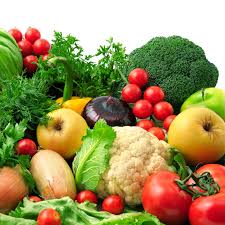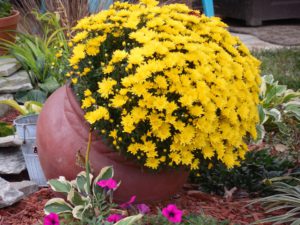Spring Garden Plant Guide

In just a few days we will be entering the spring months, this time of year presents us with the opportunity to take advantage of that extra yard space if we have not done so as yet or to begin working or to make some improvements in our existing garden planting some of our favorite veggies, herbs, fruits, or even ornamental plants including shrubs and other gardening plants. Prepare your garden beds by the removal of rocks, leaves, and other debris.
If you don’t have space outdoors to start a spring garden then container gardening can help you to grow some of your favorite plants this spring. These gardens are created and used by so many, besides the yard space both my wife and I are growing some of our favorite herbs from containers that we have and are still reaping a great harvest so consider using containers if your space of gardening outdoors is limited.
If soil improvements are needed then by all means make those improvements by bringing in good garden soil, adding soil amendments, or making your very own organic soil mix. At the heart or root of healthy plants is the right soil type.
Depending on the type of garden you’re growing determine first what plant material or species will be working with, this will give you a better understanding of the soil type to work with. For example, if you are growing low-maintenance plants or plants that require small amounts of moisture to thrive the soil type will be sandier that offer good drainage.
If you’re growing a vegetable garden that includes cabbage, celery, asparagus, water spinach, arugula, water mint, etc… then the soil type will have to be a good garden soil that holds moisture because these veggies thrive best in soils that are moist. The key to remember is the soil type must be compatible with or complement the plant species you’re working with.
Types of Gardens
I don’t know which garden you have or are planning to construct but there are many to choose from. From flower gardens to herb gardens, fruits, and even vegetable gardens, container gardens, and so on but whatever garden you decide on, make it a great year as you work on your garden projects and reap the rewards of your harvest.
How to Plant
Again know what you are planting this will require some homework on your part but remember taking time to properly plan will pay off in big ways. Ensure when installing plants in the same garden beds that their soil type, lighting requirements, and moisture needs are the same because what you want to avoid is grouping plants together that have different needs (right soil type, lighting, and moisture).
If plants with different requirements are placed in the same plant bed will cause one plant to suffer at the expense of the other, for example never group plants together that have different water requirements.
When is the Best Time to Harvest EdiblePlants
This is so important, whether you’re growing edible plants from seeds or seedlings know when its the best to harvest, what you don’t want is to pick your edibles when they are too young because they have not come to full (age) flavor as yet neither do you want to delay harvest time because edibles that have passed their due harvest date depending on what you are growing can become overripe or hard and bitter.
Growing & Caring for Ornamental Plants
Growing ornamental plants requires knowing what will encourage healthy growth which includes as stated earlier, the soil type, lighting, and moisture requirements, below are guides that will help you grow a successful garden.
Garden Success Tips

- Having a plan, and knowing what you want will make your spring garden planting easier
- Know the correct planting depth because planting at the wrong depth or planting too deeply will either cause seeds, not to germinate or seedlings as well as planting plans that are mature will suffer from nutrient deficiency.
- When growing an edible garden is best to use an organic soil mix or start a compost pile
- Know your plant’s water requirements
- Knowing your soil ph is so important
- Have some knowledge of garden pests
- Having some knowledge of pruning is good
- Slow-release fertilizers are released slowly over a period of time which is taken up by the plant’s roots
- Quick-release fertilizers absorb quickly and are taken up immediately by the plant’s roots
- Organic fertilizers are produced from natural organics, for example, cow, chicken, and horse manure
- Controlling insects with birds
- Releasing and keeping beneficial insects in your garden
Winning the War or Weeds
Weeds will compete with your garden plants for water and nutrients so keeping your spring garden free of weeds will help your plants to establish easier causing you to yield a good harvest.
Mulches and their Benefits
Mulches are really great because of what they can do so adding mulches to your spring garden will really help your garden plants.
Garden Safety Tips
While it is great to work in our gardens it is also good to play it safe. Here are some safety tips as you work in your spring garden.
1. The first rule to remember at all times is safety first this is where proper planning comes in no matter how small the job may be.
2. Have a plan for where you are working exp… working on slopes, working near overhead power lines or electrical lines in the ground can be dangerous.
3. Be mindful of water lines as well as irrigation lines.
4. Watch out for uneven grounds that can cause you to lose your balance.
5. Wait until the grounds are dried from rain or heavy dew. A former co-worker went out on the hotel grounds one morning to make his regular checks, slipped on the grass that was wet, and broke his leg. Talk about a freak accident.
6. Always read and follow the instructions for power tools before using and make sure these tools are in good condition.
7. Wear long clothing to be protected from the sun or sunscreen to protect your skin.
8. The proper footwear such as Gardening boots.
9. Gardening gloves.
10. Goggles to protect your eyes.
11. Earmuffs or earplugs when using power tools such as lawnmowers, chainsaws, trimmers, etc…
12. Safety belt to support your back especially if the project requires a lot of lifting.
13. Carry tools in a wheel burrow for ease and comfort.
14 Get help if the project requires more hands.
15. Keep your body hydrated by drinking lots of water.
16. Eat a healthy meal before starting work and wait for 10-15 minutes before working.
17. Takes 5-minute breaks, allow yourself these breaks especially if the temperature is high and the workload is great. Find a cool or shaded area.
18. Wearing a hat can help keep you cool when working in the heat.
19. Have a first aid kit close by.
20. Keep insect spray close by for, exp. wasp. hornets etc…
21. Never leave tools laying on the ground you might trip on them which may cause injury.
The final word
Planting a spring garden is really amazing because there are so many benefits as we connect with nature in such a wonderful way. So let’s spend that much-needed time in our garden as we prepare and maintain it through the spring months and beyond.
About the author
Norman loves being in the garden, both at home and for his job....
he is 'Natures Little helper' being outdoors, growing his vegetables and flowers from an early age.
Now having spent over 22 years in the profession he want to give some of his knowledge to others...
his vast array of hints and tips you will find scattered over this site will help you no end growing plants in your garden.
